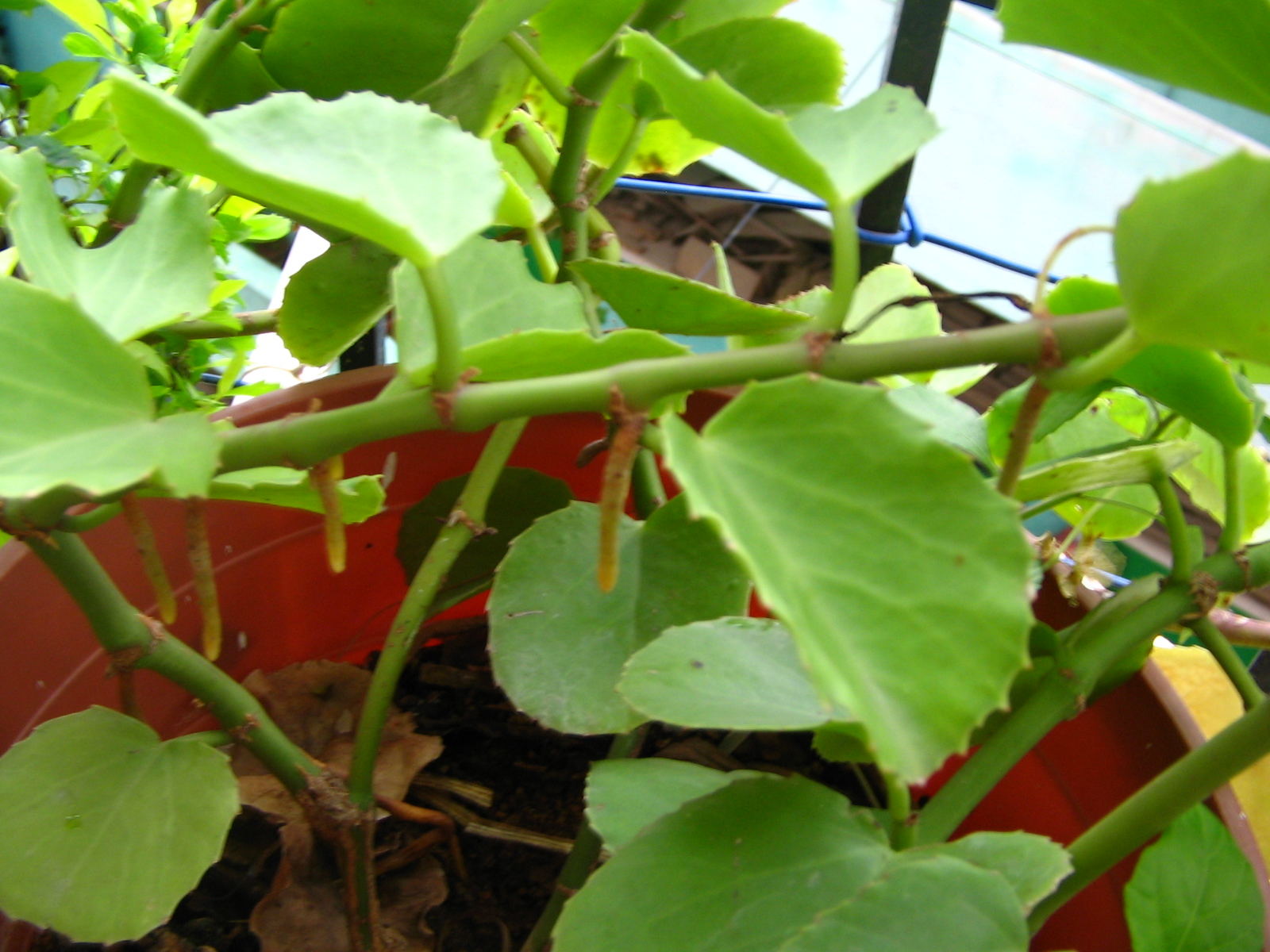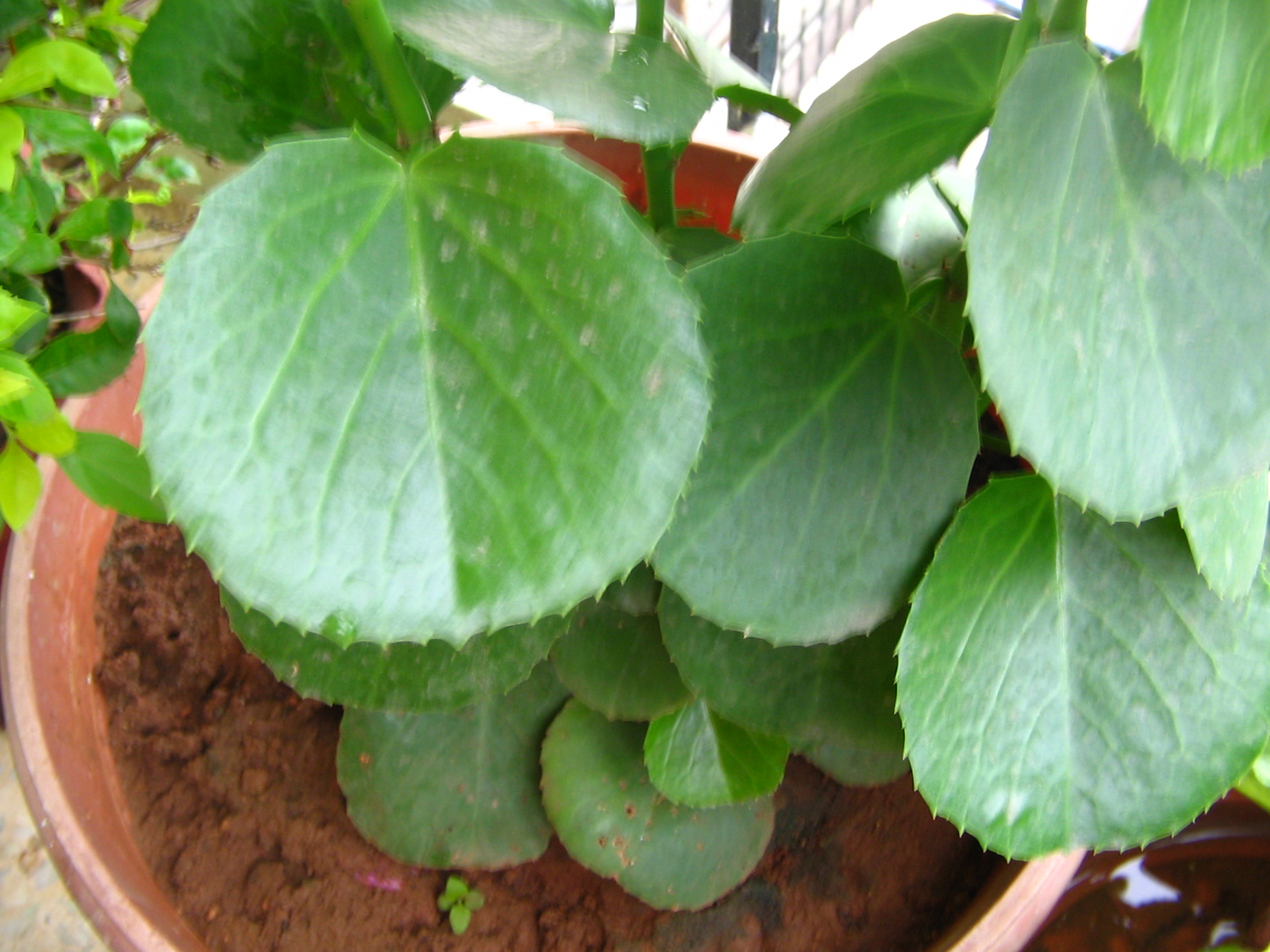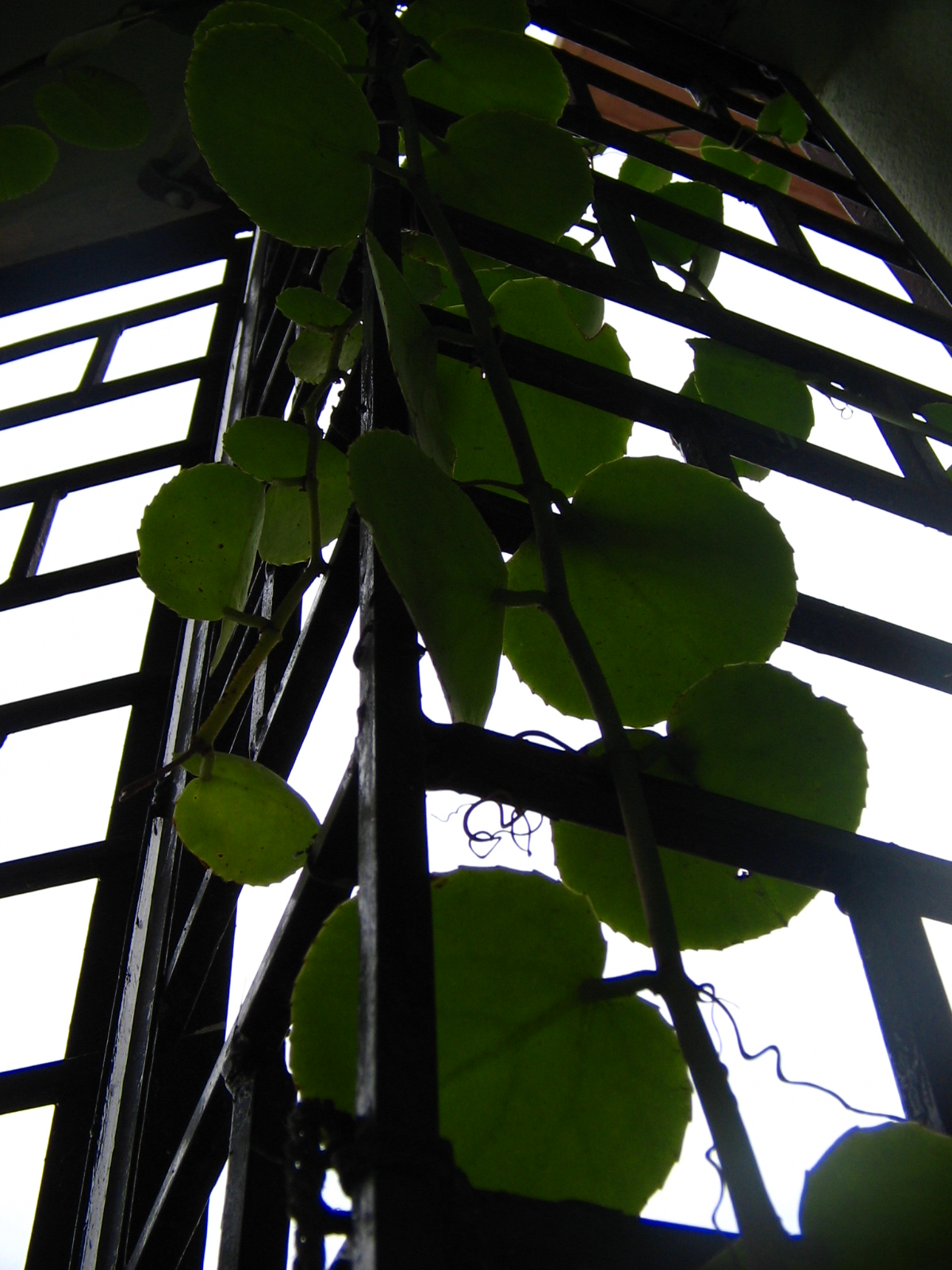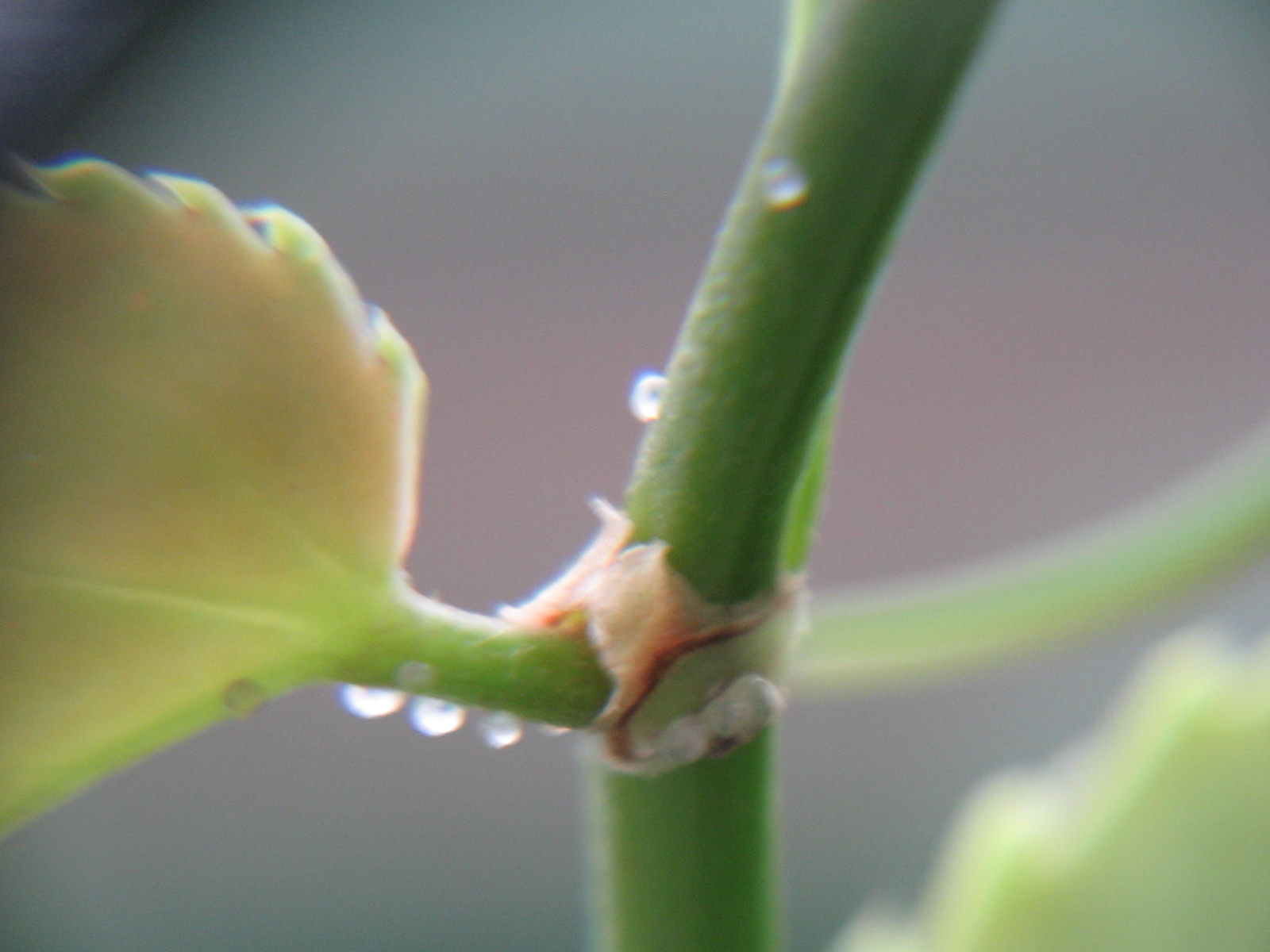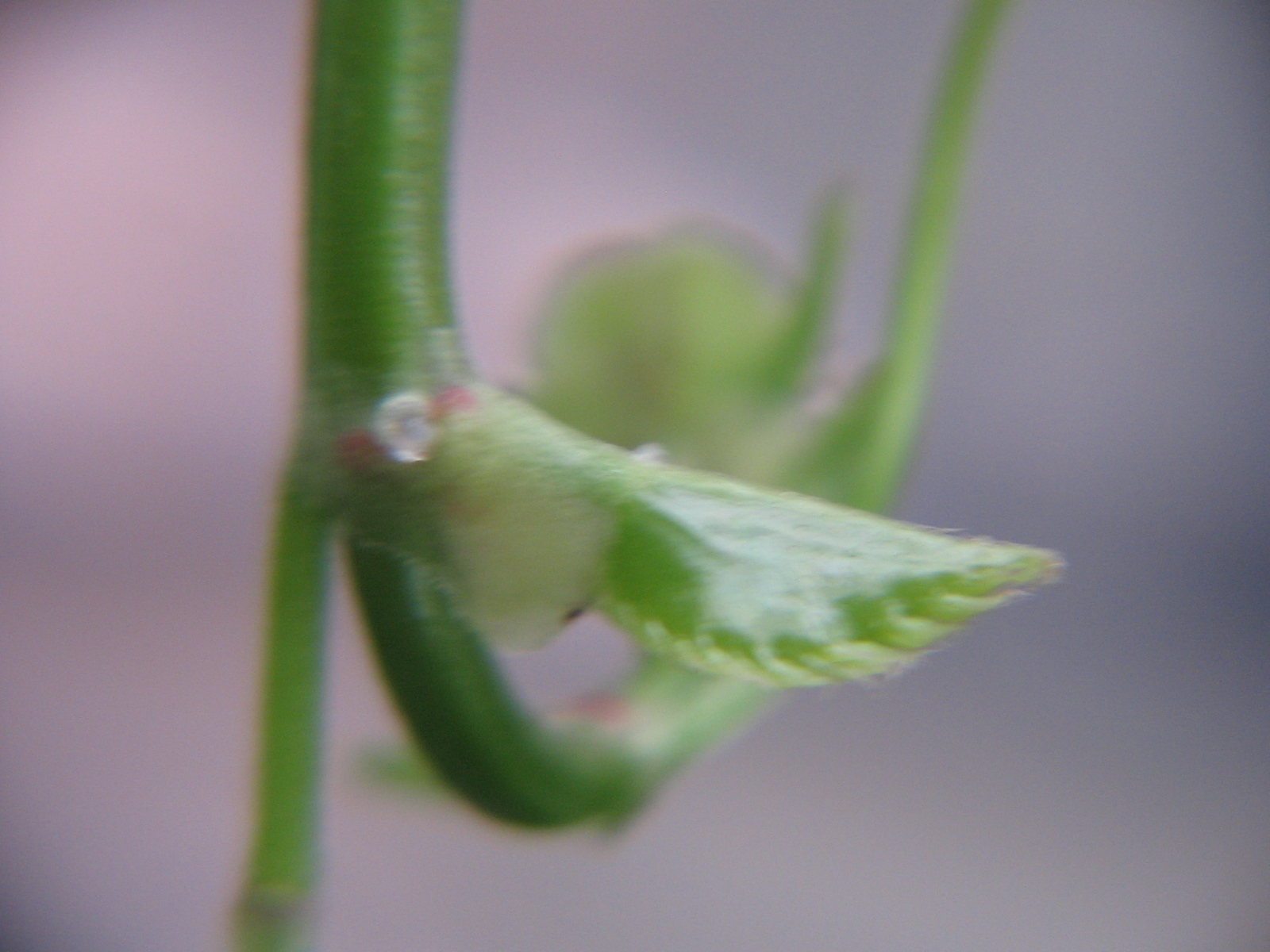Biology Forum › Botany Discussion › climber identification
- AuthorPosts
- August 2, 2007 at 2:58 am #8033
 oortclouddomicileParticipant
oortclouddomicileParticipantgreat botanical souls, please help me identify this climber. i have attached photos.
the plant has alternate leaves with each node containing a leaf, a tendril, and sometimes one or more adventitious roots. the leaves are dark green, serrate, thick and glossy when new. the oldest ones are about 3 inches in diameter. flowers are small and occur in bunches. vegetative propogation by stem cutting possible.
- August 2, 2007 at 3:00 am #74941
 oortclouddomicileParticipant
oortclouddomicileParticipant - August 2, 2007 at 9:39 am #74947
 kotoreruParticipant
kotoreruParticipantLooks amazing, sorry I can’t help you out 🙁 I hope someone here can shed some light on the situation.
- August 2, 2007 at 2:19 pm #74954
 oortclouddomicileParticipant
oortclouddomicileParticipantit seems to be a xerophyte and i am from india.
- August 2, 2007 at 7:18 pm #74971
 kotoreruParticipant
kotoreruParticipantHave you just inferred that from the thick, waxy leaves?
- August 3, 2007 at 2:34 am #74974
 oortclouddomicileParticipant
oortclouddomicileParticipantno. it can survive a week or two without needing to be watered. can you give me some insights into the classification of climbers within plants. like do they all belong to a particular division or are they scattered?
- August 3, 2007 at 11:07 pm #74995
 didymocarpusParticipant
didymocarpusParticipantthey are scattered 🙂
- August 11, 2007 at 2:13 pm #75120
 oortclouddomicileParticipant
oortclouddomicileParticipantthank you. but still no clues to what it might be.
just an update this.. the plant is secreting some kind of exudate in drops at the nodes, leaves and stem of the growing part. resemble insect eggs but they are not. will try to collect them and see if i can get it characterized. might take a long long time.
a couple of new photos – note the droplet-exudate.
- August 23, 2007 at 1:01 am #75383
 ivygirl_5Participant
ivygirl_5ParticipantThank you for the indepth description of your plant and the great photos. They are both extremely helpful with the id. I will go through my keys tonight to try and identify it for you. I have a good idea. May I ask what color the flowers are and the number of petals? Any info on the flowers will be of use for the id.
- August 23, 2007 at 3:49 am #75387
 ivygirl_5Participant
ivygirl_5ParticipantI’ve been looking in my keys for the last hour and I may just have found your plant.
Vitaceae — Cissus rotundifolia (aka: Arabian Wax Cissus, Peruvian grape ivy)
This climber has both tendrils and round, dark-green, fleshy, serrated, alternate leaves. It also secretes sugar droplets. I’m 99% sure this is your plant. I hope this helps. 😀
- August 25, 2007 at 1:10 pm #75427
 oortclouddomicileParticipant
oortclouddomicileParticipanthey, thanks a lot.
i’ll see if i can find information on the species you’ve mentioned… and verify.
it flowered once. but the flowers were too small small..and i am sorry i didn’t pay enough attention then. - August 25, 2007 at 1:20 pm #75428
 oortclouddomicileParticipant
oortclouddomicileParticipantyeah, that’s the one. thanks again.
- August 25, 2007 at 10:45 pm #75437
 kotoreruParticipant
kotoreruParticipantSecretes sugar droplets eh? What kind of sugar I wonder? Glucose? Sucrose? Just interested. Well done on the ID Ivygirl_5 😛
- August 26, 2007 at 6:09 am #75442
 ivygirl_5Participant
ivygirl_5ParticipantThanks for the compliment kotoreru. 😳 Plant taxonomy is my favorite hobby.
If I remember my Plant Physiology correctly the process of producing sugar droplets is called Guttation.
When stomata are closed at night and transpiration cannot occur root presure causes the plant to secrete fluid which is composed primarily of sugars, but also contains other organic compounds and minerals. The sugar is mainly glucose, but depending on the plant other sugars may be present in differing amounts. i.e. Glucose has the highest concentration in rye and barley fluids and galactose highest in wheat. Guttation is common in grasses.
- August 26, 2007 at 12:02 pm #75447
 kotoreruParticipant
kotoreruParticipantFascinating, many thanks 🙂
- August 27, 2007 at 12:15 pm #75485
 MrMisteryParticipant
MrMisteryParticipantLook up my other post. Guttation excrets xylem solution, which contains a neglijable amount of sugar.
Xylem solution is composed mainly of water(99%, give or take). The other one percent is made out mainly of mineral ions(Ca, K, Cl, Mg and many more). Organic substances are rare, which the most common organic substances present in the xylem being the hormones cytokinines. - August 27, 2007 at 2:48 pm #75493
 ivygirl_5Participant
ivygirl_5ParticipantThanks for catching my mistake. 😉
- AuthorPosts
You must be logged in to reply to this topic.

